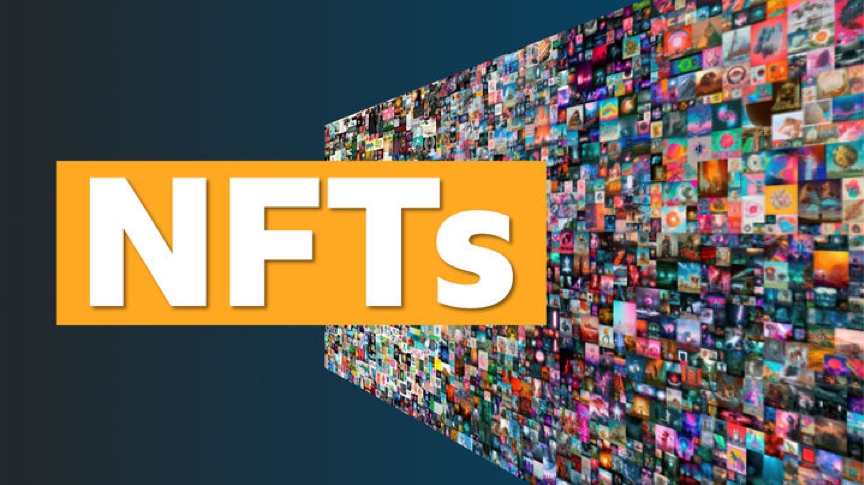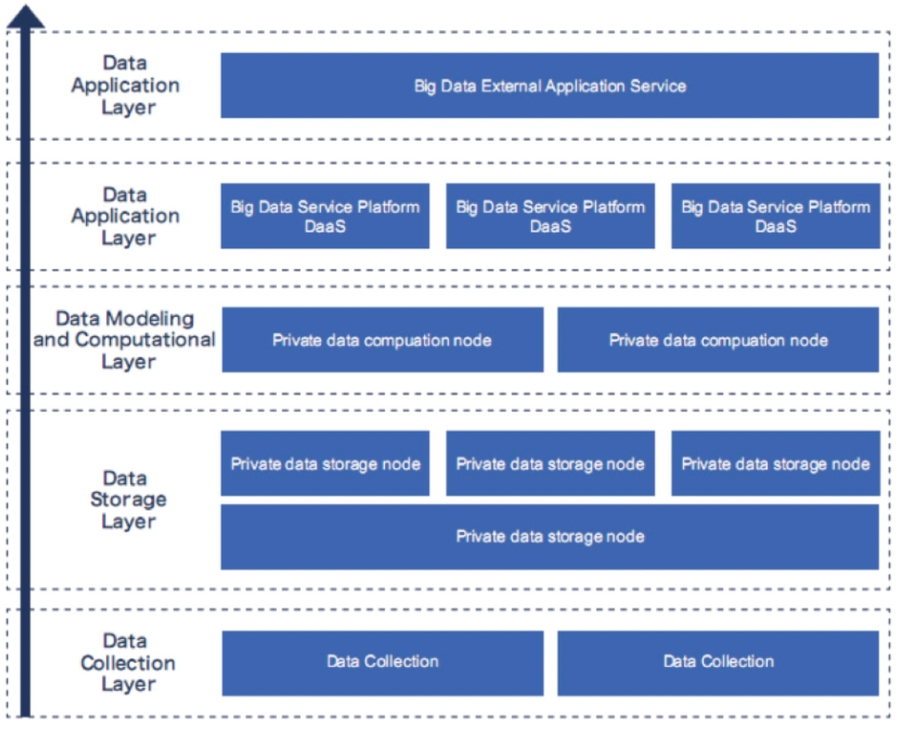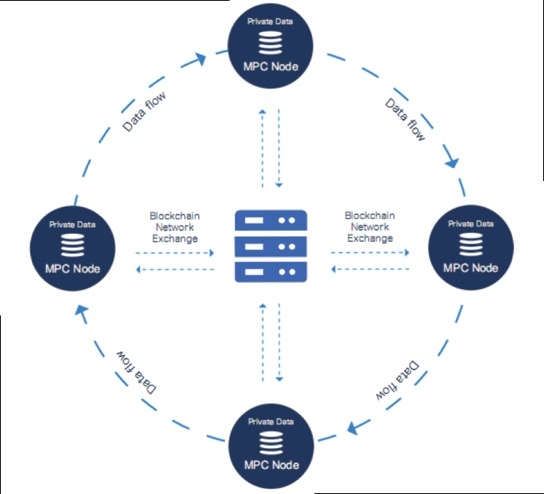MANIA—A New World of the Integration of NFT and AI
The Arrival of the Age of AI
In this age of information and technology explosion, the AI industry is on a fast track seeing ever-growing application in the business world. AI has also become part and parcel of people’s daily life, enabling novel use scenarios such as unmanned transportation, distribution, storage, aerial flights, etc. In medical care, AI can be used to analyze images for assistive diagnoses. AI also has a lot to contribute in agricultural, industrial and public governance scenarios.

Although AI is still in its infancy when it comes to commercialization. AI solutions are estimated to be an industry with a compound annual growth rate of 65% over the next decade, reaching trillions of USD by 2027. With technological advancement, favourable governmental policies and investors’ enthusiasm continuing to foster the development of AI, the sustained high-speed growth of the industry will be driven by three factors:
The depth and scale of data: Data is becoming the most valuable asset for companies, as technologies for data generation and collection (such as written, visual and audio records, etc.) develop, and the popularization of IoT fosters the exponential increase in the quantity of obtainable data, which totaled about 40 ZB in 2020. Finding a practical workflow to extract valuable business insights from the massive quantities of data has become a top concern for companies. As more data become available for training AI algorithm models, AI is capable of making more and more accurate predictions.
Computing power: As the limitations of traditional computing technologies are broken through by advanced hardware and software technologies such as GPU, FGPA and ASIC chips as well as cloud computing, distributed computing and parallel computing, AI has emerged from the lab and found its use in the business world.
Creating real value for societies: AI has helped countless businesses make revolutionary transitions crucial for achieving their goals. Customer service chatbots, anti-fraud systems of financial institutions and AI-assisted customer targeting are all examples of this. AI-assisted recommendations are earning Netflix an extra billion USD of revenue every year.
The Value Foundation of AI and Challenges
The value foundation of AI rests on the raw materials necessary for producing it, namely data and computing power, while real social and economic value is created by AI algorithms. Algorithm models are the layer that’s closest to us, as AI applications are only made possible by them. In other words, the value of data and computing power is actualized through algorithm models. Without the models, any amount of computing power is futile.
In the past few years, cheap and efficient computing power (made possible by GPU), a near-infinite storage capacity for big data, an omnipresent deployment of sensors and the fast development of all other supporting technologies have created the explosive growth of AI. And with this comes the biggest challenge: how to protect the intellectual property of algorithms, thus protecting the value foundation of AI so that AI scientists are motivated to continue creating.
Protecting AI intellectual property is challenging in the following ways:
Difficult to authenticate: Like with other software products, it is difficult to authenticate the ownership of an AI algorithm, which subjects the works of AI scientists to theft and abuse.
Easy to copy: Although costing a lot to create, an algorithm is essentially a string of code, and it takes no more than a few clicks to copy it. Being no experts in encryption techniques, most AI scientists lack the effective means to protect their intellectual property.
Difficult to protect: In a centralized environment, anyone who has access to the system can easily copy other people’s algorithm models for free.
These challenges will shake the value foundation of AI in the long run and even strangle its growth potential. Fortunately, with the help of blockchain and distributed storage technologies, we are well-equipped to tackle these challenges.
NFT
A non-fungible token is a unit of data stored on a digital ledger. Unique and indivisible, it is already widely used for the authentication of intellectual properties, certificates and other paperwork, invoices and receipts, tax documents, in-game digital items, etc. In the future, NFT will continue to transform industries (such as art, gaming, etc.) where ownership authentication is critical.

On Mar. 11th, 2021, Everydays: the First 5000 Days, a collage of 5000 digital images created by Beeple for his Everydays series, was sold at Christie’s for a record-breaking 69.34 million USD. This incident heralds the coming of the digital economy.
The trade volume of NFT also grows exponentially year by year. From 2019 to 2020, the volume nearly tripled, rising from 62.86 million to 250 million USD. In 2021, thanks to thriving DeFi ecosystems, the trade volume of NFT in the first quarter alone beat the entire year of 2020 by 8 times, totaling 2 billion USD. From 2018 to 2020, the market size of NFT was up by 825%, active NFT addresses increased by 201%, the number of buyers increased by 144%, and the number of sellers increased by 113%.
Compared with traditional art dealerships, NFT trading platforms have the advantages of accessibility, transparency, traceability, low transaction cost and low entry barrier, and thus can best protect the interests of artists and collectors. Traditional artworks are sold through auction houses like Christie’s, where service charges are high, and the authenticity of an artwork and its ownership history are difficult to determine. NFT trading platforms, on the other hand, give users transparent information as to an artwork’s creation, uploading, viewership, and transaction and collection history. Service charges are also much lower compared to traditional auction houses. Not to mention that artists will have a sustained income from royalties, which will motivate them to create more.
There are similarities between the art and AI markets, as AI algorithms are also works of creative design. Thus, using NFTs to authenticate AI algorithms is not only viable but also a brilliant idea.
AI+NFT=MANIA
For this very purpose, Matrix plans to launch MANIA (MAN Intelligent Authentication), a platform where AI algorithms can be traded like NFT artworks. Let’s take a look at how MANIA tackles traditional intellectual property challenges.
Distributed Storage
All algorithm models created by AI scientists will be stored on distributed storage networks in partnership with Matrix, which keeps the algorithms safe from being stolen by the owner of any individual node.
Blockchain Authentication
Authentication is a core function of blockchain. When uploaded to cloud storage, an algorithm model will receive a time stamp ensuring that its ownership is unique and traceable.
NFT Liquidity
As algorithm models are the building blocks of the AI world of tomorrow, a boost in their liquidity will set the AI industry on the right track. On MANIA, people can convert their algorithm models into NFTs, which they can take cross-chain to different NFT markets to trade.
Privacy-Preserving Computation
Matrix adopts privacy-preserving computation (PPC) to safeguard algorithms from theft. With its help, algorithm scientists can provide AI services for profit and rest assured that no one will steal away their ideas.
The workflow of MANIA consists of the following parts: algorithm creation, distributed storage, blockchain authentication and NFT minting.

Picture: Workflow of MANIA
Highlights of MANIA
Separation of Ownership and Right to Use
The separation of ownership and right to use is a core feature of MANIA. It guarantees that algorithm models are easy to trade and thus in good liquidity while making sure they are also easy to use by people who are interested in their functionality. There are two types of NFTs: 1. ownership NFT, a token of ownership for the correlating algorithm, and 2. Right-to-use NFT, granting the right to access the correlating algorithm and AI service on MANAS through PPC nodes.

Picture: Separation of the Ownership and Usage Right of an Algorithm NFT
Privacy Layer Structure
The secret to separating ownership and usage right lies in privacy protection and privacy storage. Traditional blockchains are designed to be completely transparent. When it comes to partial transparency and the storage of private information, they are at a disadvantage. In the age of big data and AI computing, collaboration among different entities based on data sharing will become a trend, and it will fall onto blockchain technologies to protect data privacy and separate the ownership of data from the right to use them by enabling the necessary authorization methods.
Guaranteeing data safety and facilitating data ownership authentication will benefit Matrix in three more ways:
1. When the privacy of users is guaranteed in transactions of algorithms and data, the algorithms become more efficient to use;
2. Big data applications will be empowered to facilitate the collaboration and sharing among companies and industries;
3. The synergy among data generation, modeling, application and transaction will link together entities that would otherwise be information islands and steer the big data industry onto a path of sustained growth.

Picture: The Storage and Computing Framework of MANIA
Multi-Party Security Computing
To implement the separation of NFT’s ownership and usage rights, PPC is critical. Matrix will introduce Secure Multi-Party Computation (SMC), a framework designed to enable collaborative computing among a group of distrusting participants by protecting the privacy of all parties. It guarantees independent inputs and accurate computing while making sure no inputs from one party will be leaked to other parties in the same collaborative computing group.
Matrix will adopt SMC for its blockchain data encryption, and a validation mechanism and blockchain technologies for its cloud computing and AI platforms. These, in combination with zero-knowledge proof and other cryptographic technologies, will constitute the foundation of Matrix’s next-generation general computing service platform. The framework of this data computing system is illustrated below.

Any single node in Matrix AI Network can participate in PPC by launching a collaborative computing task or joining one launched by others. The hub node controls routing and computational logic. It searches for relevant data and broadcasts its computational logic to MPC nodes. MPC nodes follow the computational logic to access their local database, perform computing tasks and send results to designated nodes. This way, a group of nodes can collaborate to carry out computing tasks and send results back to the system without compromising each individual node’s local data privacy.
MANIA—A New World for NFT
The arrival of MANIA is significant for Matrix, for the AI industry and for the NFT market.
For MATRIX
All functions of MANIA, including authentication, minting NFTs, etc. will require MAN for settlement. This will boost MAN’s liquidity and value.
An effective solution for protecting intellectual property will attract more AI scientists into the Matrix ecosystem to create more original algorithm models. Mature algorithm models can be authenticated and used to mint NFT. All this will attract more users into the Matrix ecosystem.
For the AI Industry
MANIA’s greatest contribution to the AI industry is consolidating the value foundation of the AI market. When AI scientists no longer worry about their intellectual property getting stolen, they will be more motivated than ever to create. This will help create a more dynamic ecosystem and ultimately make for the Cambrian explosion of the AI industry.
For NFT
MANIA will mark the beginning of a new type of asset which carries economic and social value, in contrast to traditional artwork or in-game item NFTs that are priced only for their artistic value. By converting AI algorithms into NFTs, MANIA will immensely expand the user base of NFT and solidify its value foundation. This will truly set off the explosive growth of the NFT market.

Last updated